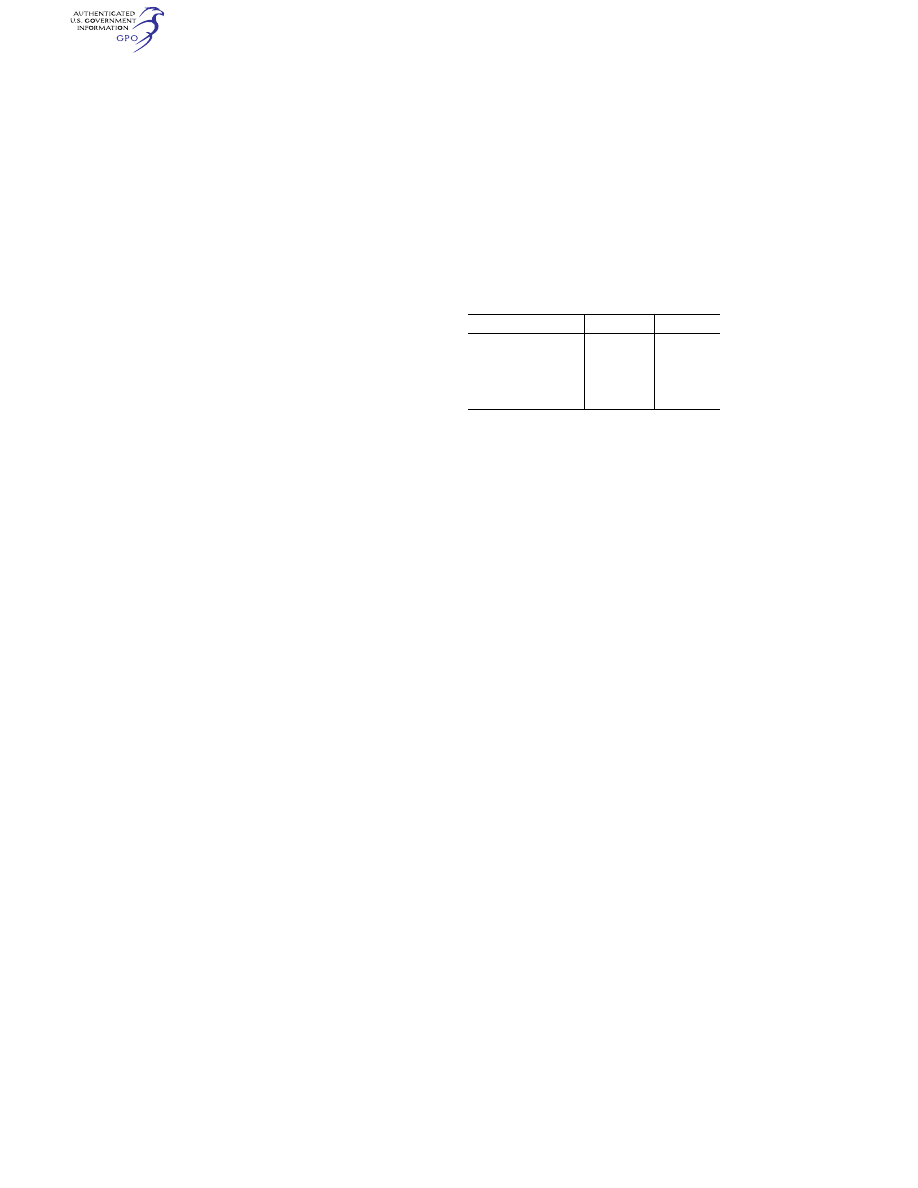
904
14 CFR Ch. I (1–1–24 Edition)
§ 187.53
(b)
Services.
Persons covered by para-
graph (a) of this section must pay a fee
for the FAA’s rendering or providing of
certain services, including but not lim-
ited to the following:
(1) Air traffic management.
(2) Communications.
(3) Navigation.
(4) Radar surveillance, including sep-
aration services.
(5) Flight information services.
(6) Procedural control.
(7) Emergency services and training.
(c) The FAA does not assess a fee for
any military or civilian overflight op-
erated by the United States Govern-
ment or by any foreign government.
(d) Fees for overflights through U.S.-
controlled airspace covered by a writ-
ten FAA agreement or other binding
arrangement are charged according to
the terms of that agreement or ar-
rangement unless the terms are silent
on fees.
[Docket FAA–2015–3597, Amdt. 187–36, 81 FR
85853, Nov. 29, 2016]
§ 187.53 Calculation of overflight fees.
(a) The FAA assesses a total fee that
is the sum of the Enroute and Oceanic
calculated fees.
(1)
Enroute fee.
The Enroute fee is cal-
culated by multiplying the Enroute
rate in paragraph (c) of this section by
the total number of nautical miles
flown through each segment of Enroute
airspace divided by 100 (because the
Enroute rate is expressed per 100 nau-
tical miles).
(2)
Oceanic fee.
The Oceanic fee is cal-
culated by multiplying the Oceanic
rate in paragraph (c) of this section by
the total number of nautical miles
flown through each segment of Oceanic
airspace divided by 100 (because the
Oceanic rate is expressed per 100 nau-
tical miles).
(b) Distance flown through each seg-
ment of Enroute or Oceanic airspace is
based on the great circle distance
(GCD) from the point of entry into
U.S.-controlled airspace to the point of
exit from U.S.-controlled airspace
based on FAA flight data. Where actual
entry and exit points are not available,
the FAA will use the best available
flight data to calculate the entry and
exit points.
(c) The rate for each 100 nautical
miles flown through Enroute or Oce-
anic airspace is:
Time period
Enroute rate
Oceanic rate
January 1, 2017 to January
1, 2018 ...........................
58.45
23.15
January 1,2018 to January
1, 2019 ...........................
60.07
24.77
January 1, 2019 and Be-
yond ...............................
61.75
26.51
(d) The formula for the total over-
flight fee is:
Rij = E*DEij/100 + O*DOij/100
Where:
Rij = the total fee charged to aircraft flying
between entry point i and exit point j.
DEij = total distance flown through each
segment of Enroute airspace between
entry point i and exit point j.
DOij = total distance flown through each
segment of Oceanic airspace between
entry point i and exit point j.
E and O = the Enroute and Oceanic rates, re-
spectively, set forth in paragraph (c) of
this section.
(e) The FAA will review the rates de-
scribed in this section at least once
every 2 years and will adjust them to
reflect the current costs and volume of
the services provided.
[Docket FAA–2015–3597, Amdt. 187–36, 81 FR
85853, Nov. 29, 2016]
§ 187.55 Overflight fees billing and
payment procedures.
(a) The FAA will send an invoice to
each user when fees are owed to the
FAA. If the FAA cannot identify the
user, then an invoice will be sent to the
registered owner. Users will be billed at
the address of record in the country
where the aircraft is registered, unless
a billing address is otherwise provided.
(b) The FAA will send an invoice if
the monthly (based on Universal Co-
ordinated Time) fees equal or exceed
$400.
(c) Payment must be made by one of
the methods described in § 187.15(d).
[Docket FAA–2015–3597, Amdt. 187–36, 81 FR
85853, Nov. 29, 2016]